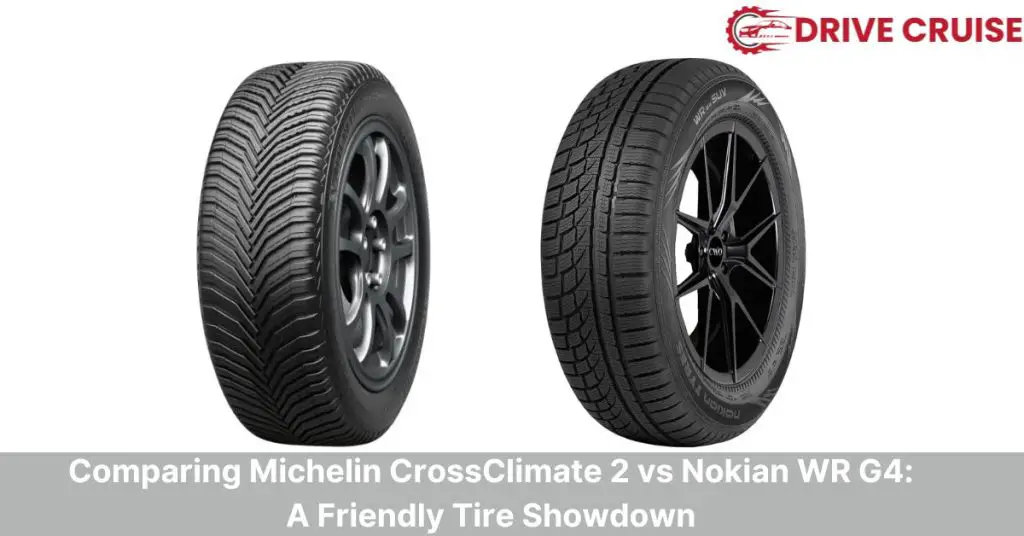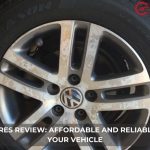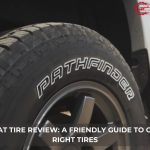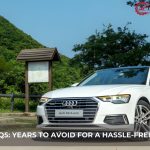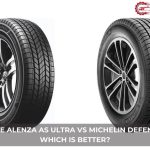If you’re in the market for all-season tires that can handle moderate climates year-round, you’ve likely come across the Michelin CrossClimate 2 and Nokian WR G4. These two tires are popular options for drivers who want the convenience of not having to switch between summer and winter tires. But how do they compare to each other? Let’s take a closer look.
All-season tires like the CrossClimate 2 and WR G4 are designed to provide good performance in a variety of weather conditions, including rain, light snow, and dry roads. They offer a balance between the grip of dedicated summer tires and the traction of dedicated winter tires. This means that you can use them throughout the year without having to switch between different sets of tires. Additionally, all-season tires tend to have longer tread life compared to summer and winter tires, making them a cost-effective option in the long run.
Performance Breakdown: A Detailed Comparison
Dry Performance
When it comes to dry roads, both the Michelin CrossClimate 2 and the Nokian WRG4 perform very well. They offer excellent grip and precision during cornering maneuvers, as well as a good steering feel and driver feedback. Braking performance on dry surfaces is also impressive, with both tires providing short stopping distances.
Wet Weather Performance
In wet conditions, the Michelin CrossClimate 2 and the Nokian WRG4 both excel. They offer excellent hydroplaning resistance at highway speeds, thanks to their tread design elements that help evacuate water. Wet braking performance is also impressive, with both tires providing short stopping distances. Additionally, they both offer confidence-inspiring handling in wet conditions.
Light Snow Traction
Both the Michelin CrossClimate 2 and the Nokian WRG4 are all-season tires that can handle occasional light snow. They both feature biting edges and sipes in their tread pattern for snow grip. However, it’s important to note that they have limitations compared to dedicated winter tires for severe snow environments. Overall, they both offer good capability for handling light wintry conditions.
Treadwear and Expected Lifespan
The Michelin CrossClimate 2 has a UTQG treadwear rating of 640 B A, which is quite impressive. However, it’s important to note that actual treadwear can vary depending on factors like driving style and road conditions. The Nokian WRG4 doesn’t have a UTQG treadwear rating, but it has received positive reviews from real-world users.
Comfort and Noise Levels
Both the Michelin CrossClimate 2 and the Nokian WRG4 offer a comfortable driving experience, with good suppleness and low noise levels at highway speeds. They strike a good balance between all-season performance and a comfortable ride.
Additional Considerations
Price Point Compared to Competitors
When it comes to the price point, the Michelin CrossClimate 2 is more expensive than the Nokian WRG4. The Michelin CrossClimate 2 starts at $173.99, while the Nokian WRG4 starts at $157.34. However, keep in mind that both of these tires are premium all-season tires, so they are priced higher than some other options on the market. If you are looking for a budget-friendly option, you may want to consider other brands.
Warranty Coverage
Both Michelin and Nokian offer limited treadwear warranties for their tires. The Michelin CrossClimate 2 comes with a 60,000-mile treadwear warranty, while the Nokian WRG4 comes with a 50,000-mile treadwear warranty. In terms of road hazard coverage, Michelin offers a standard 6-year limited warranty, while Nokian offers a 2-year limited warranty. It’s important to note that warranty coverage can vary depending on the retailer, so be sure to check the specifics before making a purchase.
Fuel Efficiency
Both the Michelin CrossClimate 2 and the Nokian WRG4 are designed to be fuel-efficient tires. The Michelin CrossClimate 2 has a rolling resistance rating of “A”, which means it is one of the most fuel-efficient tires on the market. The Nokian WRG4 also has a low rolling resistance, but its rating is not as high as the Michelin CrossClimate 2. Keep in mind that fuel efficiency can vary depending on driving conditions, so it’s important to monitor your gas mileage and adjust your driving habits accordingly.
Choosing the Right All-Season Tire: CrossClimate 2 vs. WR G4
If you’re in the market for a new set of all-season tires, you might be wondering which one to choose between the Michelin CrossClimate 2 and the Nokian WR G4. Both tires are excellent options, but they have some key differences that might make one a better fit for your needs than the other.
Ideal Applications for Each Tire
When it comes to the Michelin CrossClimate 2 vs Nokian WRG4, here are some ideal applications for each tire:
Michelin CrossClimate 2
The Michelin CrossClimate 2 is an excellent choice for drivers who prioritize a balance between dry, wet, and light snow performance. This tire is designed to provide excellent grip in a variety of conditions, making it a great option for drivers who live in areas with unpredictable weather.
In addition to its excellent performance, the CrossClimate 2 also provides precise handling and a sporty driving experience. If you’re looking for a tire that can handle both your daily commute and your weekend adventures, the CrossClimate 2 might be the perfect fit.
Nokian WR G4
The Nokian WR G4, on the other hand, is an ideal choice for drivers who prioritize very good winter traction for occasional snowy conditions. This tire is designed to provide excellent grip on snow and ice, making it a great option for drivers who live in areas with harsh winters.
In addition to its winter capabilities, the WR G4 also provides a potentially quieter and more comfortable ride. If you’re looking for a tire that can handle the winter months without sacrificing comfort, the WR G4 might be the perfect fit.
Conclusion: Selecting the Optimal All-Season Option
After comparing the Michelin CrossClimate 2 and the Nokian WRG4, it’s clear that both tires have their strengths and weaknesses.
The Michelin CrossClimate 2 is an excellent choice for drivers who prioritize performance in snowy and wet conditions. It offers superior traction and handling on slippery surfaces, thanks to its unique tread design and EverGrip™ technology. However, it comes with a higher price tag than the Nokian WRG4.
On the other hand, the Nokian WRG4 is an affordable option that provides reliable performance in a wide range of conditions. It’s a great choice for drivers who live in areas with mild winters and occasional snow. The Nokian WRG4 has a slightly lower price point than the Michelin CrossClimate 2.
It’s important to consider your individual driving needs and climate conditions when making a choice between these two tires. If you live in an area with frequent snow and rain, the Michelin CrossClimate 2 may be the better option for you. If you live in an area with mild winters and occasional snow, the Nokian WRG4 may be the more practical choice.
It’s always recommended to consult with a tire professional for specific recommendations based on your vehicle and location. They can help you make an informed decision and ensure that you select the optimal all-season option for your needs.
Related Posts:
- Comparing Michelin CrossClimate 2 vs Nokian WR G4: A Friendly Tire Showdown
- Continental Cross Contact LX25 vs Michelin Cross Climate SUV: Which is Better?“
- Falken Wildpeak AT3W vs BFG KO2: Which is the Better Off-Road Tire?
- Goodyear Assurance MaxLife Review: A Friendly Guide to Choosing the Best Tires
- Goodyear Assurance MaxLife vs Michelin Defender2: Which One is Right for You?
- Goodyear vs Michelin: Which Tire Brand is Better?
- Michelin Defender2 Review: A Friendly Guide to Choosing the Best Tires
- Yokohama vs Bridgestone: Which Tire Brand is Better?

